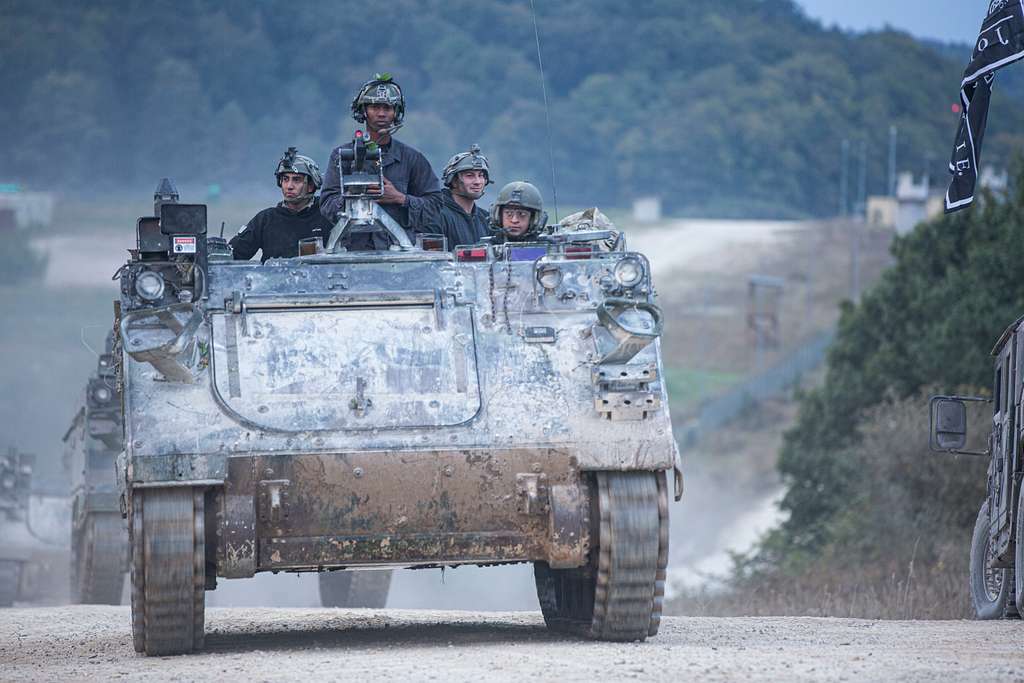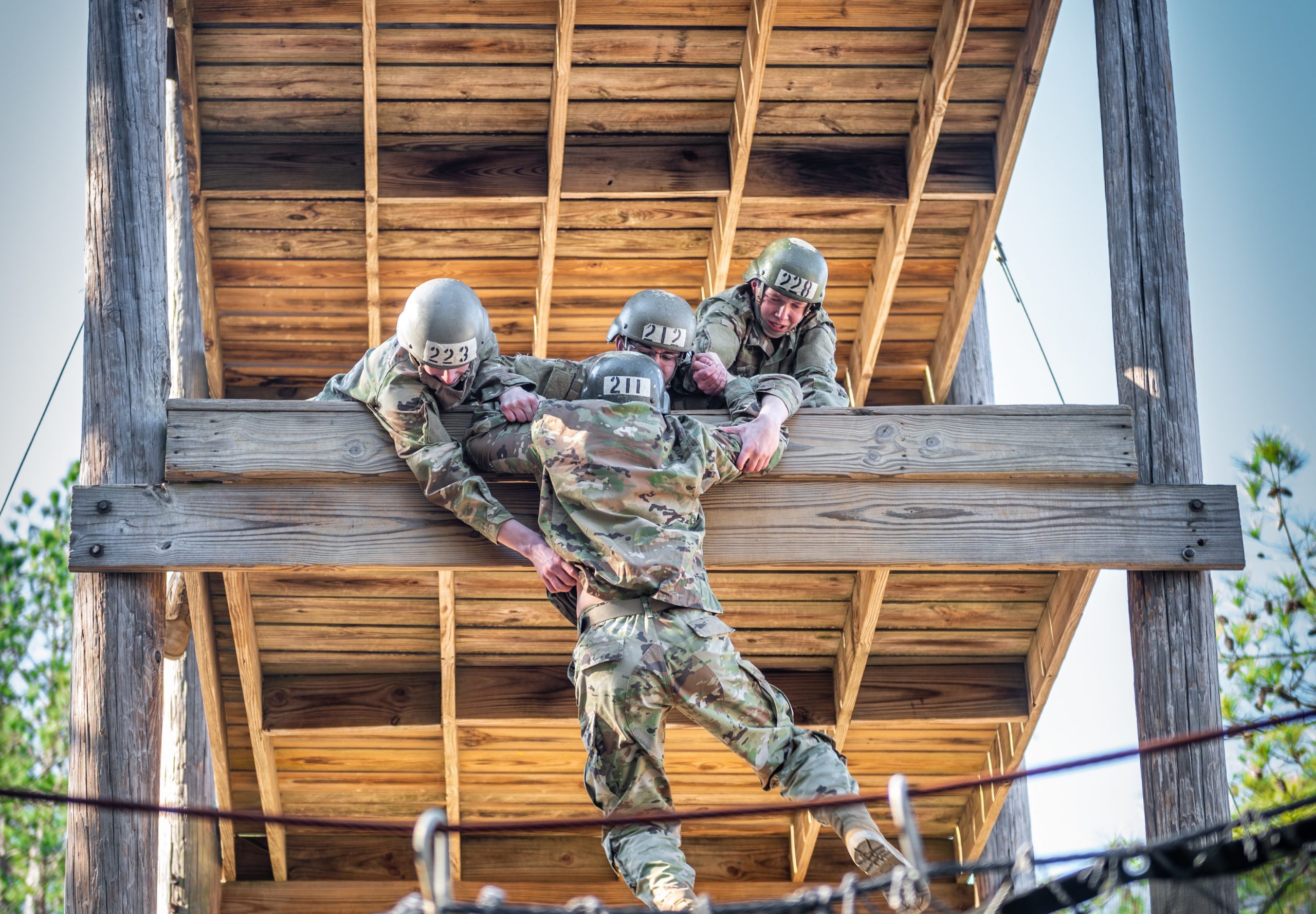Winning at JMRC for Junior Officers – From “The OPFOR”

Combat Training Centers (CTCs) are world-class training opportunities for brigades and battalions to focus on tactical training that also serves to test the readiness of companies, platoons, and squads. Although the objective of CTCs is stressing and evaluating mission command and logistics at the battalion and brigade levels, companies and below, led by junior officers, contribute to this insofar as they can enable their HQs to be successful by executing their fundamental METL tasks well.
The focus of this paper is to help company-level junior officers find success at the Joint Multinational Readiness Center (JMRC) and to provide insight into the rotational units on the minds of 1-4 IN – Callsign “Warrior”. The authors served in various 1-4 IN company and platoon positions for over 26 rotations in Hohenfels, Germany. They understand the many complexities training units face to deploy to a CTC and wish to impart some tips to their counterparts across the force by giving them a view of the typical shortfalls through “Warrior’s eyes.” Mastering the basics of security, rehearsals, inspections, and audacity is critical to helping you and your formations leave JMRC a better-trained force.
1. Not Your Average Security
The importance of pulling security has been ingrained in junior officers since the beginning of our careers. At a CTC, it’s not as simple as assigning 360° sectors. We recommend going above standard static security and patrolling early and often to develop the situation both in the offense and defense. This will develop the enemy situation in your local area far earlier and more accurately than your S2 can. Dismounted observation posts are critical. Soldiers rarely want to leave the safety of vehicles (especially in bad weather), however the early warning from an observation post buys crucial time to alert the main body. By the time the report of Warrior opposing forces (OPFOR) makes it from the recon teams back to an infantry company, we are likely already at or through your main defensive line.
Every formation is responsible for its own security. This becomes difficult for engineers, fires, and support battalions as well as CPs and TOCs. Soldiers in those units have specific skills, but 12-hour shifts along with security and sleep requirements makes a complex problem. It can’t be assumed that infantry and armor units on the frontlines will stop every threat. We recommend camouflage, positioning yourself in undesirable terrain, and a flexible security plan to achieve better survivability. A standard 10% security posture with a rehearsed plan to quickly increase to 30%-50% when an enemy presence is reported in the AO as a minimum standard will lead to success.
Warrior in Action: A 1-4 recon company made it through the main defensive line of a rotational training unit (RTU) relatively undetected. It was early in the rotation and the Warrior S2 had yet to locate the RTU’s HQ elements. We tasked the platoons to look for CPs in assigned zones, specifically looking in areas with high ground near major intersections, the locations we recommend you avoid. We quickly found numerous CPs and TOCs in these areas. If Warrior makes it past a units initial defense line, it’s first targets will be unit CP’s in predictable locations, with poor security postures.

2. Rehearsals & PCIs
As a junior officer, you are likely present for higher-echelon planning and briefing. Your subordinates usually aren’t. Rehearsals share this understanding down the formation. Rehearsals and briefings with your entire element ensures understanding across the whole formation, but the situation rarely permits for this. Ramp briefs and back briefs from key leaders go a long way to eliminate confusion. A commonly forgotten rehearsal is with your equipment, however. Your MILES equipment is not always intuitive. Learn how to use and zero MILES during RSOI. The JMRC MILES warehouse publishes videos on how to operate all the equipment here JMRC MILES – YouTube. Rehearsing your commo plan in this environment also goes a long way. Having been in formations with good and bad comms, it was significantly easier to relay the inevitable FRAGOs over the radio or to fall back on rehearsed contingencies when communication fails or is being disrupted.
Warrior in Action: Warrior platoons and companies have established battle drills that we rehearse prior to rotations. Common battle drills for us are ODA/LDA crossings, simple/complex obstacle reduction, and reacting to ambush all in and out of contact. This allows our most junior TCs to rapidly react and the rest of the formation to adjust to the situation immediately. ATP 3-21.8 Appendix J contains recommended battle drills, but units can make adjustments by simply establishing TTPs.
OPFOR “wins” tactical engagements because we know our equipment well. Before every rotation, we zero our MILES and teach our Soldiers how to operate and troubleshoot the various systems we have. Training units see it as “unfair” when they had an opportunity to kill us, but their MILES didn’t work. We see this as no different than vehicle maintenance. In an engagement, we can quickly tell which vehicles don’t have working MILES, so we don’t need to target it because we know it can’t kill us.
3. Audacity & Decisiveness
An important difference between CTCs and home station tactical training is that Warrior OPFOR is free-thinking and is motivated to seek out and kill you. It’s critical to be decisive and act swiftly in every engagement. Warrior, fights with significantly smaller formations than the training unit, but finds success through audacity and tempo to avoid engagements of attrition. We frequently see training units suppressing without maneuvering, expending ammo, and staying behind cover. Warrior exploits indecisiveness and will call for fire and find an assailable flank on these elements, exploiting the RTU’s lack of tempo. Take the fight to Warrior with your superior force to win. Do not give Warrior a chance to breathe. A junior officer leading a formation decisively will disrupt Warrior’s decision-making and put them on their heels. By doing this, they will likely be disorganized and unable to mount a united attack.
Warrior will find a way to use nearly all the terrain in the Box. Just because your S2 assessed the wood lines as severely restrictive, they usually aren’t for a knowledgeable force with homefield advantage like 1-4 IN or our nation’s adversaries. Abrams and Bradleys can move through most wood lines in Hohenfels, and you can surprise Warrior by route planning through these bold maneuver corridors. Conversely, Warrior will also use these tight maneuver corridors, so don’t leave these areas undefended or unobserved. Warrior doesn’t want to go through open areas, yet training units often plan engagement areas there. Most formations struggle to implement obstacles that effectively disrupt Warrior’s tempo because they take terrain and enemy analysis for granted and plan for us to be a “dumb” enemy. We recommend junior officers go on patrols when the enemy threat is still low and before tactical obstacles are emplaced. You will likely find alternative routes or bypass trails you didn’t initially consider. This can be incredibly important when conducting resupply missions, CASEVAC, jump TOC, etc, later when the enemy threat is inevitably much higher.
Warrior in Action: My platoon conducted a feint the day before a larger company attack. I believed we could skirt the southern edge of the “Box”, like we had done many times before and surprise the main body of the RTU. Through concealed obstacles and battle positions, a Bradley platoon with a creative platoon leader lured us into their engagement area and quickly destroyed us with TOWs. The RTU has equipment and manpower overmatch, and if they skillfully conduct terrain and enemy analysis, they can leverage them all audaciously to win against 1-4 IN.
U.S. Army CTCs provide the most challenging and realistic training outside of combat in the world. Through security, rehearsals, inspections, and audacity, we hope junior officers and their units can find success at JMRC. As daunting as a CTC might be for junior officers, these basic tips will help you “win” your piece of the fight. At the end of the day, Warrior wants the rest of the force to overcome any adversary they face in the future.

Authors Biographies
CPT Maxwell Coleman is a Military Intelligence Officer who previously served as a Platoon Leader, Mortar Platoon Leader, and Specialty Company Executive Officer at 1-4 Infantry Battalion.
1LT Jonathan Larios is currently a Platoon Leader and previously served as the AS4 at 1-4 Infantry Battalion.
1LT Jonathan Wurzelbacher previously served as a Platoon Leader and Company Executive Officer at 1-4 Infantry Battalion.



